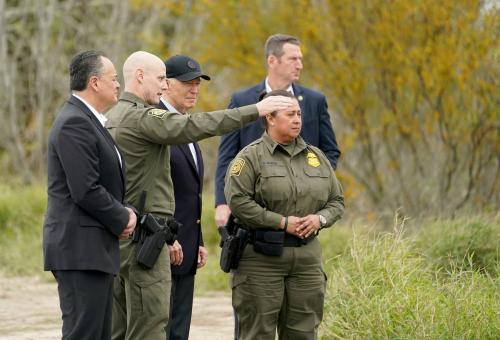America’s demography is changing dramatically as a result of three major engines: (1) the immigration of “new minorities”; (2) the aging of the baby boomers toward seniorhood; and (3) a “middle class flight” from expensive coastal areas.
In this presentation, William H. Frey discusses how these demographic mega-trends are shaping the “demographic personalities” of the nation’s regions, metropolitan areas, central cities, suburbs and exurbs in fundamental ways. It utilizes recent data from the Census Bureau’s mid-decade American Community Survey and population estimates.
view handout 1: Metropolitan Area Demographic Attributes
view handout 2: Central City and Suburb Demographic Attributes
Frey shows that the nation continues to be transformed into broad demographically distinct regions. These include the multi-ethnic “Melting Pot” region, the growing, suburban like “New Sunbelt”, and the older, mostly white “Heartland”—each region being shaped by ongoing immigration, migration, race-ethnic and aging dynamics. The Melting Pot, transformed largely by immigration, is the most multicultural vibrant, the Heartland, which has sustained out migration and slow growth, is aging the fastest, and the New Sunbelt, in receiving migrants from the other regions, is “younging” and “aging” at the same time.
Drilling down from regions to metropolitan areas, Frey points out the distinct growth poles for different race-ethnic groups. He then discusses how a new “urban hierarchy” is developing—stretching from old urban cores, to exurbs and nonmetropolitan area, and its demographic and political significance.
Frey then presents signature demographic profiles of the nation’s cities and suburbs, showing how 27 “melting pot” metros possess the most diverse, young, and family oriented cities and suburbs; and how they differ sharply from those in other fast growing and slow growing parts of the country.
In presenting this demographic roadmap, Frey makes the case that while the nation is sometimes referred to as a “melting pot” this characterization is most apt for selected areas of the country, while other areas are far less racially diverse, and getting older—posing challenges for “one size fits all” policies directed toward cities suburbs and metropolitan areas.
The metro program hosts and participates in a variety of public forums. To view a complete list of these events, please visit the metro program’s Research and Commentary page which provides copies of major speeches, PowerPoint presentations, event transcripts, and event summaries.



Commentary
America’s New Demographics: Regions, Metros, Cities, Suburbs and Exurbs
February 12, 2007